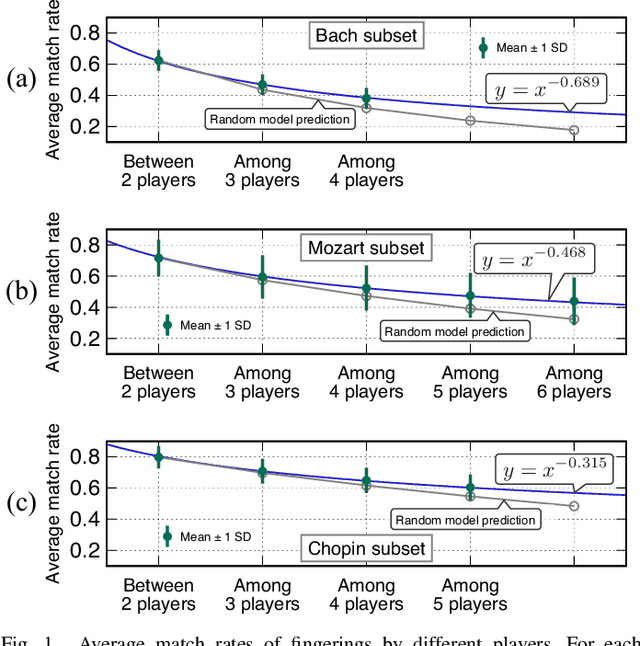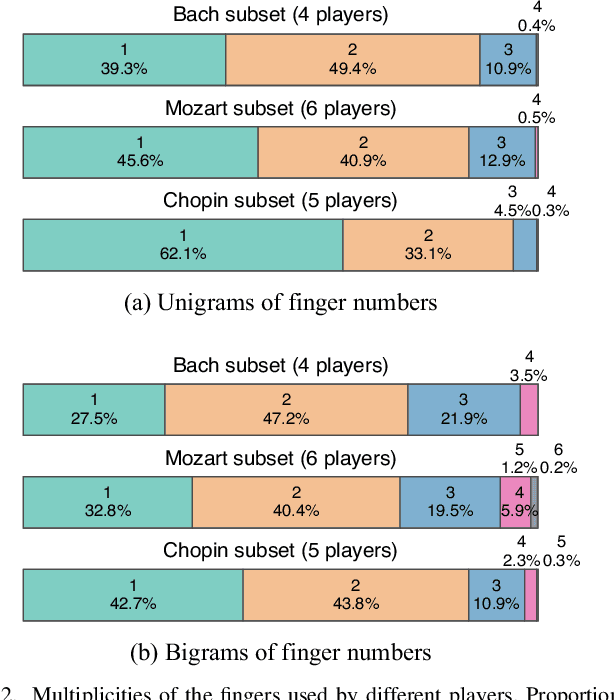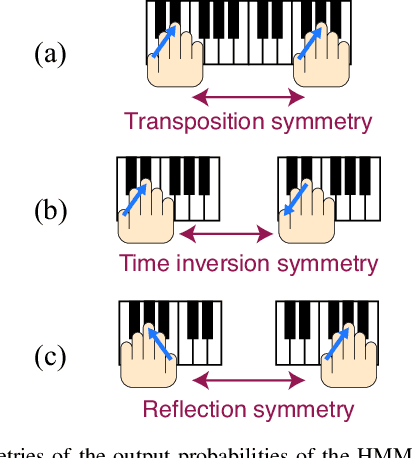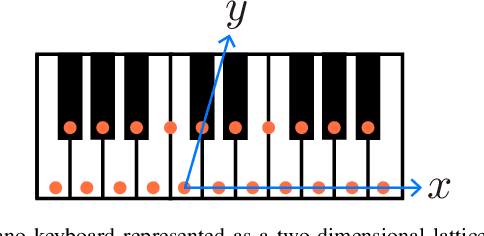Statistical Learning and Estimation of Piano Fingering
Paper and Code
Apr 23, 2019



Automatic estimation of piano fingering is important for computationally understanding the process of music performance and applicable to performance assistance and education systems. While a natural way to formulate the quality of fingerings is to construct models of the constraints/costs of performance, it is generally difficult to find appropriate parameter values for these models. Here we study an alternative data-driven approach based on statistical modeling in which the naturalness of a given fingering is described by probabilities. Specifically, we construct two types of hidden Markov models (HMMs) and their higher-order extensions. We also study deep neural network (DNN)-based methods for comparison. Using a newly released dataset of fingering annotations, we conduct systematic evaluations of these models as well as a representative constraint-based method and find that the methods based on high-order HMMs outperform others in terms of estimation accuracies. We also quantitatively study individual difference of fingering and propose evaluation measures that can be used with multiple ground truth data. We conclude that the HMM-based methods are currently state of the art and generate acceptable fingerings in most parts and that they have certain limitations such as ignorance of phrase boundaries and interdependence of the two hands.
 Add to Chrome
Add to Chrome Add to Firefox
Add to Firefox Add to Edge
Add to Edge